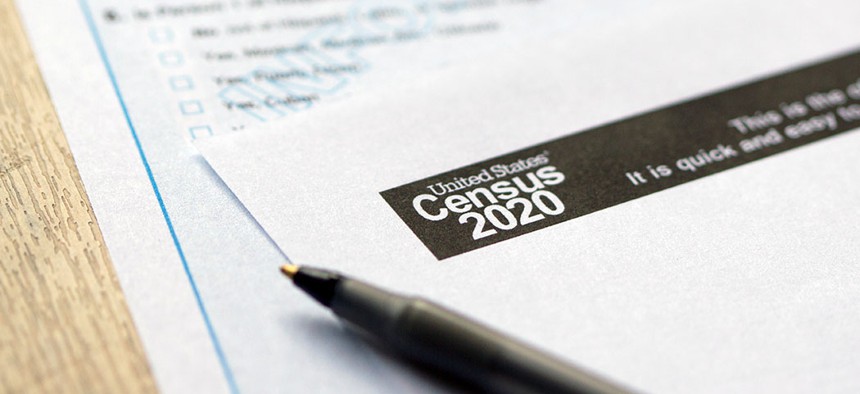Advocates have long criticized Gov. Andrew Cuomo and his administration for delays in distributing funds for getting out the count for the 2020 census. The governor appointed members of a state commission overseeing the upcoming census in January 2019 – when the report they were tasked with creating was due. So when the report finally came out in October, critics were expecting funding might not come out as early as they hoped.
Those fears now appear to be becoming reality. Awards for state funding to counties and cities will begin to be approved and distributed on March 10, just two days before the U.S. Census Bureau starts to send people mail on how to respond to the census.
“Let's just say what it is,” said Sol Marie Alfonso-Jones, a senior program officer at the Long Island Community Foundation, which is working with Suffolk County and expected to work with Nassau County on distributing census funding. “It's late in the game.”
The census was already expected to be a challenge in New York, which had a below average self-response rate in the 2010 census, leading to the loss of two congressional seats. Its difficulties are expected to be amplified this year, in particular because the attempt to add a citizenship question, even though it failed, is expected to depress responses from immigrant communities. This is also the first year the census will be conducted mostly online, which presents an additional barrier, especially for the 14.5% of New Yorkers without internet access.
New York has so far dedicated a historic $60 million toward the census – with an additional $10 million proposed for this year’s budget – which is 30 times more than it allocated in 2010. Of that amount, it has allocated $15 million to 62 counties and the cities of Buffalo, Rochester, Syracuse and Yonkers, with another $5 million set aside to be deployed as necessary as people begin to respond to the census.
“The state has launched an unprecedented up to $70 million statewide campaign to ensure every New Yorker is counted, and we are hard at work delivering on that promise,” Jack Sterne, press secretary for Empire State Development, said in a statement when asked about the timing of the disbursements. “We are confident the funding will make a real impact in reaching hard-to-count communities across the state.”
Organizations involved in getting people counted in the census wanted activity around the census to begin before forms go out so they could plan ahead where they should focus resources and outreach efforts.
“I think that's also part of what was lost with the delayed funding,” Meeta Anand, census 2020 senior fellow at the New York Immigration Coalition, told City & State in December.
That’s part of why New York City – which has dedicated $40 million to the census – announced its awards to nonprofits in December. At that time, the state was still accepting responses to an initial request for expressions of interest from counties and cities, who need to submit their final application by next week. The state funding is especially vital for local governments outside New York City that may have fewer resources and be more reliant on the philanthropic sector.
“It would have been helpful to know earlier how much money our community could expect to receive so people could be getting their plans in order and know how much money they had to fund certain activities,” said Tory Russo, who serves as the census coordinator for Syracuse. “I would add that we're pretty fortunate in our community to have these couple other sources of funding.”
Some counties such as Nassau, Suffolk, Onondaga and Brooklyn – along with Syracuse – are expected to partner with local foundations to help distribute those dollars more efficiently. New York’s philanthropic community has already been active on the census, pledging at least $3 million to nonprofits through the New York State Census Equity Fund.
“We already have an infrastructure and processes in place to cut these checks in a way that's, you know, that's fast,” said Alfonso-Jones at the Long Island Community Foundation. “Faster than government could do it, anyway.”
The state requires that 75% of the funding goes toward nonprofits or libraries creating outreach materials or advertising, going door-to-door and providing services guiding people through the forms, while the county can hold onto the rest for their own census initiatives. Officials from Greene County have griped about the requirements, as their initial proposal didn’t include nonprofits. Certain foundations will be playing a role in screening nonprofit applicants – who simultaneously need to be approved by the state – and doling out the funding for nonprofits when it comes through.
“I guess the good thing is that we as a community have been talking about this since 2018,” said Frank Ridzi, vice president of community investment at the Central New York Community Foundation, which is likely to partner with Syracuse and Onondaga County to distribute state funding. “And so we do already have quite a few partners deployed out in the community. And so, you know, to the extent that we can build on that work, we're already well situated.”
Those active in getting out the count for the census have emphasized that, although the state funds may be coming in later than hoped, they need to focus on doing the best they can to get resources to community-based organizations.
“At this point, everybody is concerned about timing,”said Jeff Wice, a census and redistricting expert who is currently a senior fellow at New York Law School. “We should keep our eye on the prize of counting everybody and doing the best you can with the funding that’s available. We really can’t go back and haggle on money not being spent earlier.”
Correction: This story originally overstated the amount of funding the state has made available in order to address the census.

NEXT STORY: NY-17 candidate Josh Eisen accused of stalking, harassment and racism


